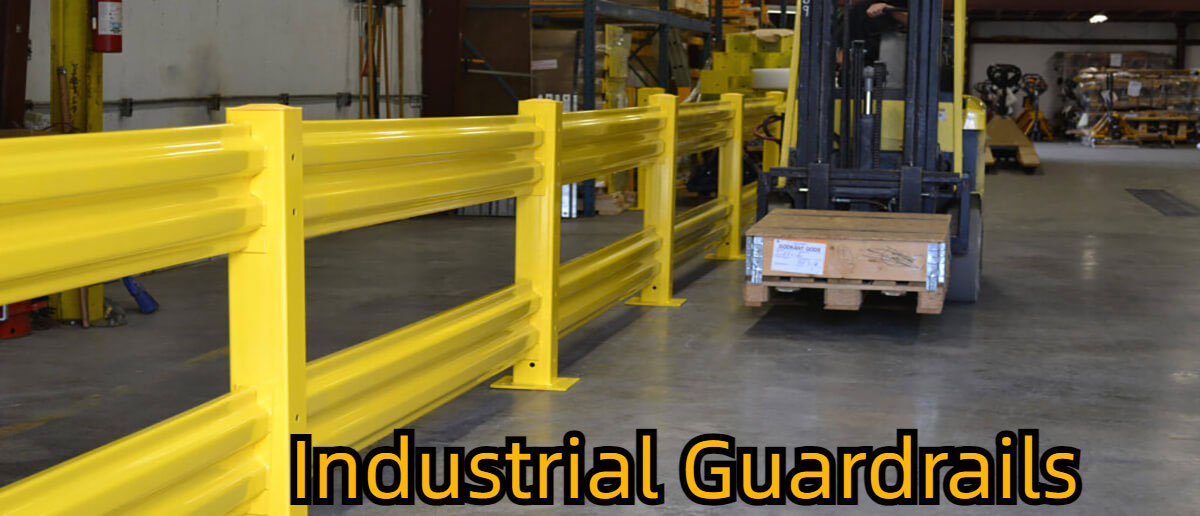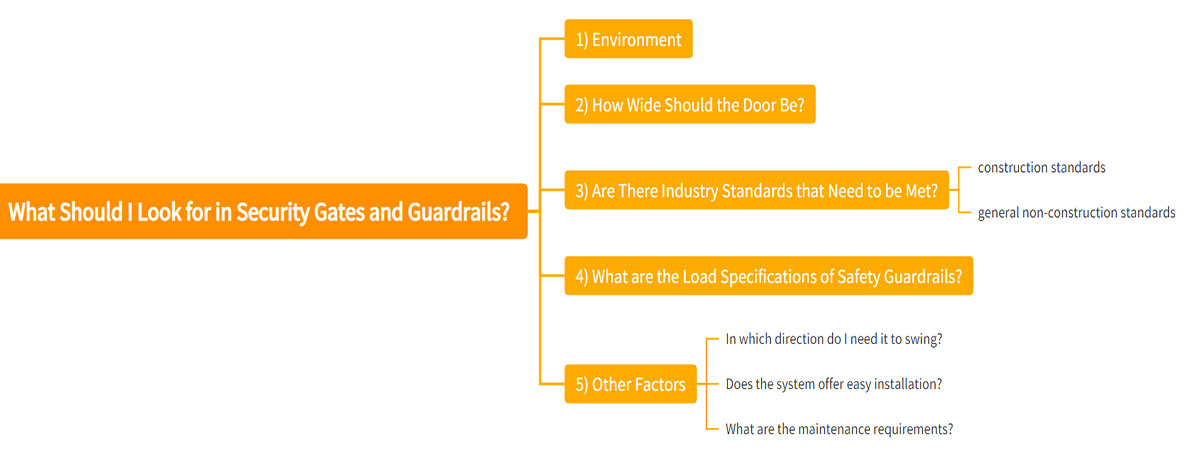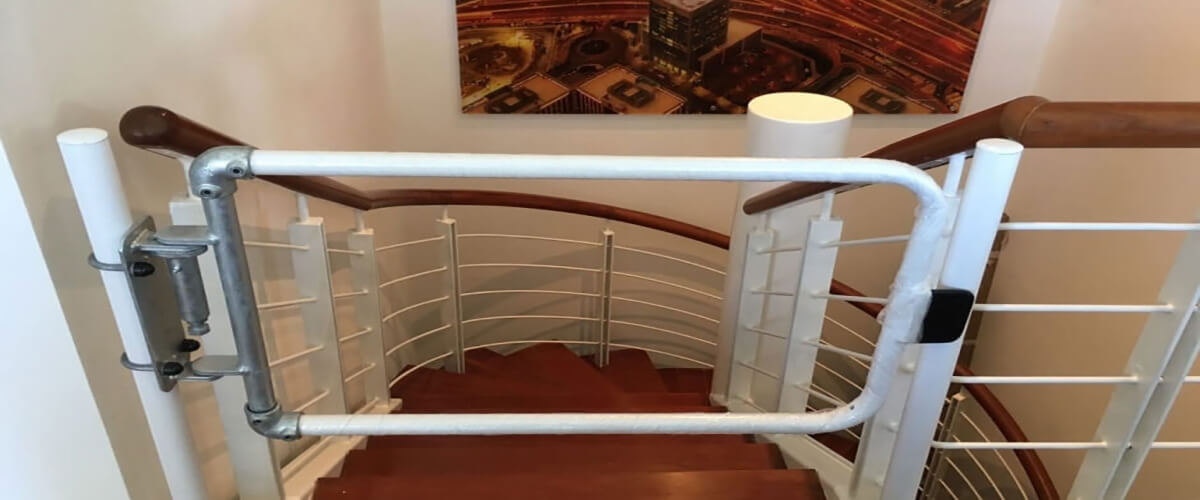In an industrial setting, security doors and guardrails go hand in hand. Both protect people from harm in hazardous areas of the workplace. The difference, of course, is that if workers occasionally need to enter dangerous areas, only gates can do the trick.
But which door is best for your situation? Where do you get industrial safety doors and guardrails to protect your workers from themselves, protect your expensive equipment from human error, and save you from lawsuits? If you need to increase your business’s security level, check out the following.
1. What are Industrial Guardrails and Safety Railings?
This is an easy question because guardrails and safety rails are the same thing. They are heavy structures consisting of railings and posts placed in stairwells, ladders, elevated platforms, and other areas to protect workers, equipment, and merchandise. Like fences, they allow visibility, but they are stronger than fences.
They can also be used as safety barriers for crowd control, guiding people through high-traffic areas in an orderly manner and keeping people out of restricted areas. These track systems come in many shapes and sizes. They are also sold for permanent and temporary installations. Almost certainly, you will need security gates as part of the system if you have security railings at your workplace.

2. What does Security Gate Offer?
You can find safety doors in warehouses, construction areas, factories, and other industrial environments with stairways, raised platforms, floor openings, and stairs. In short, they allow safe access to areas surrounded by safety barriers or railings. They protect against falls, dangerous machinery, and other hazards.
The need for fall protection around floor openings and at the top of ladders and stairs is obvious. In areas with hazardous equipment or other hazards, safety gates and railings act as barriers to keep people from stepping into fast-moving machinery or bumping into merchandise.
When access to these areas is required, it is not recommended to simply open a gap in the guardrail to allow workers to pass through. And you don’t want workers climbing over guardrails or safety rails in hazardous areas, perhaps when moving heavy equipment. Security doors grant access in a manner that minimizes danger.
3. What Should I Look for in Security Gates and Guardrails?
Here are some factors to consider when deciding which type of system will meet your security needs.
1) Environment
Industrial steel is great for indoor use because it is strong and durable. However, outdoor equipment should be made of aluminum, galvanized steel, or stainless steel, since moisture and rain can cause steel to rust. The same goes for equipment used in rooms with high humidity or where corrosive materials are used.
2) How Wide Should the Door Be?
Industrial security doors may need to allow only one person through at a time or may need to accommodate forklifts or other vehicles. Adjustable-width doors are common, but you should know how far they can go.
3) Are There Industry Standards that Need to be Met?
Guardrails, on the other hand, are structures that prevent workers from falling from a platform, sidewalk, or deck. They must be strong enough to resist breaking if someone falls or pushes. As a result, these systems have additional requirements and standards.
Standard guardrail requirements are divided into two categories: construction standards and general non-construction standards. Material that is not conducive or warning signs that are highly visible may be needed in some work areas.
4) What are the Load Specifications of Safety Guardrails?
Regulations usually require load specifications. This requirement is the force that the guardrail may withstand, measured in Newtons (N) or pounds (lbs). Force requirements will depend on the application of the guardrail and the legal requirements of your jurisdiction.
5) Other Factors
In which direction do I need it to swing? Does the system offer easy installation? What are the maintenance requirements?

4. What Safety Gates and Guardrails Do Aotons Offer?
Established in 2017, Qingdao-based Aotons has been manufacturing high-quality moving ladders, work platforms, and similar equipment for five years. Aotons’ U-shaped gates meet the industry standard for self-closing security gates.
There is also no need for a latch or similar mechanism to open the door. Workers carrying items or walking near drop-off points need not be distracted by the latch when opening or closing the gate. The design meets or exceeds industry standards for use in industrial, commercial, construction, warehouse, and other environments:
- The self-closing safety gate can be adjusted in width from 16 inches to 40 inches.
- It can be installed on square or round tubes, so it is suitable for different types of safety railings.
- Doors can be installed to open inwards or outwards, and the hinges can be mounted on the left or right. (The safety gate needs to swing or slide away from the opening.)
- The aluminum doors are powder-coated yellow to improve visibility.

5. What Safety Regulations Affect Gates and Guardrails?
Every platform that is more than four feet off the ground must be fenced in, OSHA said. They should be 42 inches above the floor, although 44 inches is acceptable in some cases. OSHA and ANSI include rules regarding the dimensions of rails and posts, their materials, and the space between vertical and horizontal posts.
While common sense dictates that rails should be highly visible, they are not required to be the standard safety yellow. However, they do have to be marked to highlight danger areas. Gates also has many requirements. For example, only self-closing doors are allowed, and they must swing or slide out of the opening. Regulations cover the height of the upper rail and the loads that the upper and middle rails must be able to support.
6. For Safety Causes
Aotons experts will ensure that you receive equipment that meets OSHA and ANSI standards. Let them use their experience to help you assess your track and gate needs. Moreover, Aotons builds products to order, so it can custom design a system to meet your needs.

7. Conclusion
Whether you’re considering a combination of authentication methods or need help choosing the right security door, our experienced team can guide you through the selection of the combination of security doors and guide rail systems that make the most sense for your business.





Leave A Comment